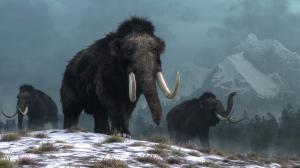Frozen DNA shows climate change drove species extinction in the Arctic
University of Hawaiʻi at MānoaNew international research on plant and animal changes over the past 50,000 years suggests that climate change was a primary driver of extinction and reduced diversity in the North.
“The disappearance of large animals in the Arctic, the so-called ‘charismatic megafauna’ like woolly mammoths, has fascinated scientists for decades,” said co-author David W. Beilman, professor and undergraduate chair of the Department of Geography and Environment in the University of Hawaiʻi at Mānoa’s College of Social Sciences. “Using preserved DNA from frigid lakes and frozen ground, prolonged periods were found—over thousands of years—where megafauna and humans co-existed in the same region, suggesting rapid climate and habitat changes were the primary drivers of large animal extinction.”
The scientific paper was published on October 20 in Nature, the world’s leading multidisciplinary science journal.
Fifty researchers from Europe and North America studied changes in ancient DNA of plants and animals preserved across the Arctic. Cutting-edge technology applied on an unprecedented scale was utilized to better understand sensitive populations and ecosystems, and the impact of climate change.
Walk from Maui to Molokaʻi
What was Hawaiʻi like 25,000 years ago during the ice age?
“There was a glacier cap on Maunakea and the sea level was so low that animals could walk from Maui to Molokaʻi,” said Beilman. “That was a period of rapid warming, multiple extinctions and the first migrations of humans across the Arctic.”
Because polar regions are warming much faster than the global average, Beilman said drastic changes often occur there first, and can be viewed as a preview for what may come elsewhere.
“The lesson warns how the reach of climate change extends to all corners of the globe,” he said. “Even those like the Arctic and Antarctic—which we think of as far away from hot, crowded places in the world—are driving climate change today.”



